-
Posts
719 -
Joined
-
Last visited
-
Days Won
13
Content Type
Profiles
Forums
Events
Store
Downloads
Gallery
Posts posted by GRC
-
-
-
Thanks Dale

Not surprised the theme has been around for quite some time. Thanks for sharing those other examples

I wonder if the Meiji period one is the original or just another permutation of the theme?
I figure most people will recognized the overly colored ones, and stay away, but I thought I'd share the iron one I posted because the iron patina looks pretty convincing and is sure to fool a lot of people.
-
 1
1
-
 2
2
-
-
Here's one that made me raise an eyebrow yesterday, then sure enough, spotted another one today... latest modern casting that will catch some people unaware.
If you want one, fine, just know that it is a modern casting made yesterday, so pay accordingly.
This one quickly got bid up to 18,500yen on its first day of being listed on YahooJ.
The one I saw yesterday had a black finish with gold highlights, so it comes in a variety of finishes.
If you look closely at the images, there's lots of signs that it is cast (air bubbles and surface irregularities).
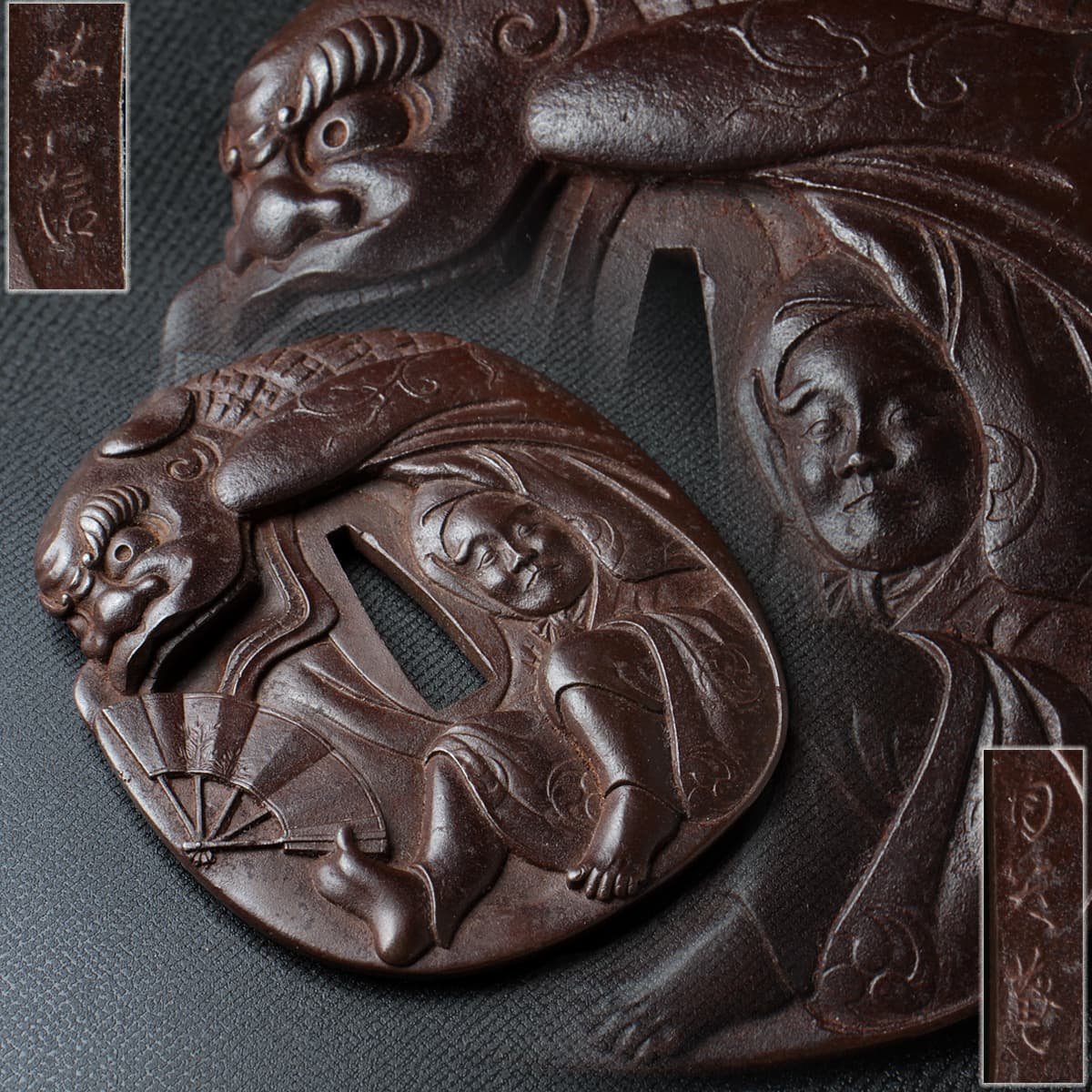

-
 1
1
-
 1
1
-
 1
1
-
-
Long overdue... been too busy with work/life. Funny how those things get in the way

MOTIF 4 – Caterpillar or Caterpillar Pupa vs Partial Guruma (wagon wheel)
Partial wheels were commonly used in tsuba designs throughout the Momoyama and early Edo periods. The typical partial wagon wheel motif has rhombus-shaped cut-outs, with straight lines, that represent the negative spaces between the wheel spokes.
I noticed that some Yamakichibei motifs that first appear to be partial wheel motifs (and are almost always described as such), are actually distinctly more tapered than some of their other partial wheels. The ones that narrow or taper more towards the ends, always have more rounded off sukashi elements as the first and last cut-outs in the series. In some case these ending sukashi elements are actually full circles.
I believe that these are playing around with the more common “wheel” motif but also layering in the sentiments conveyed by one of the stages of development of winged moth/butterfly development:
Egg – Caterpillar – Pupa (a silkworm pupa is surrounded by a silk Cocoon) – Moth/butterfly
I presume this would convey sentiments of growth and transition/change into some grander form, which would very aptly describe what was happening at the time, during the Momoyama period, when Japan was warring so that the final victor (Tokugawa Ieyasu) would achieve unity and dominion over the whole country.
EXAMPLES:
1a-Left tsuba: Dragonfly (left sukashi) & Caterpillar pupa (right sukashi)
1b-Right tsuba: Abstracted partial Wheel motif (may also allude to 5 knuckles of a fist)


2a-Left tsuba: Either a very simplified dragonfly or a ribbit head with long ears on the left side, and a caterpillar or caterpillar pupa on the right side (but described a “guruma” when it was published) – Varshavsky Collection
Note the perfectly round sukashi element at the top right, which I believe to be the head of a caterpillar or caterpillar pupa.
As a side note of interest, dragonflies do hunt caterpillars, so this would make sense as a pairing of motifs. I'm not sure how a rabbit would fit into the pairing, but the single round hole with two long "teardrops" is usually described by most as being a rabbit's head.
2b-Right tsuba: Mushroom (left sukashi) & Partial Wheel (right sukashi). From Tsuba Kanshoki by Torigoye, 1975


3a-Left tsuba: Caterpillar pupa
3b-Right tsuba: Partial Wheel
4- silkworm and cocoon:
Here's one that I believe makes a clear connection to silkworms.
The image is from Nakamura's "elephant book". Interestingly, Nakamura describes the motif as namako (sea cucumber), which seems plausible at first, but this label doesn't address the oval sukashi at the top left, nor does it address the distinctly rounded "head-shaped" area at the top of what is supposed to be the sea-cucumber.
I would suggest that this is far more likely to be a silkworm on the right (head up, legs facing left, and the little holes beneath it are holes it chewed into a leaf), and a silk cocoon at the top left.
What fascinates me is how it appears as though the Yamakichibei smiths were subtly playing around with their sukashi elements to potentially convey multiple messages and sentiments by "blurring the lines" with their representations and abstractions. Case in point, the silkworm sukashi shown above is very similar, yet clearly distinct, from the Yamakichibei sukashi variants that are more clearly nata hatchets, while others appear to more likely represent a mythical suhama bay/inlet motif (as others have discussed earlier in this thread).
-
 4
4
-
 5
5
-
 1
1
-
-
-
Another we haven't seen... this one by the Hazama school.
The clever thing about this one is that the two thick lines are "beams" that cross each other at an angle to make a "peak", inferring an abstract "roof top" where you'd typically see one of these shachi dragons.


-
 1
1
-
-
Reinhard, that is some very useful information and definitely adds a lot to our understanding of this particular tsuba

Thanks for sharing that.
2004... some solid memory skills!

-
Can’t take credit for that one Bazza... that goes to the writers of Avatar

It’s a great word 👍
-
Hikozo works are an area that I'm just starting to sink my teeth into, and just admired them from afar.
They always seemed equivalent to the other-worldly "unobtanium"

So I humbly defer to Richard, Curran and Steve's analysis on this one
 , which seems to come to a consensus of:
, which seems to come to a consensus of:
-at best Nidai
-but could also be a later "den"
-and could even be an "utsushi" made by someone not directly connected to the Higo school smiths
I have to say though, if it is indeed an utsushi, it sure had me fooled!
Which just goes to show why having only "a little knowledge" in a specific area is dangerous when it comes to high end works.
I certainly wouldn't venture into this particular area (with money in hand) until I know a lot more.
And I suppose that again affirms why high end pieces benefit so much from having some sort of "official validation" from shinsa.. regardless of how flawed it can be at times.
A positive affirmation from papers will go a long way to convince someone (who isn't certain) to pay a higher value.
It was a fun auction to watch, and learn from

-
-
Some thoughts on shinsa and high end prices for tsuba:
Shinsa gets so many papers wrong so often, that it really shouldn't matter what they say in many cases.
The obvious pieces shouldn't need papers anyway... and even then shinsa still makes mistakes (eg. an obvious, signed Yamakichibei tsuba was given a Saotome attribution... it's been posted on this message board in the past).
But then again, people will always want/need "confirmation" from some sort of perceived authority before dropping the big bucks on something that is "museum class".
Sadly, all this just reaffirms the idea that all too often, the high end prices are less about the piece itself and more about trophy hunting and the bragging rights that go along with it. But that seems to require the "papers" to wave around as justification. So when papers are present for high end pieces, the price gets driven up.
I have read in several recent-ish posts that It seems that NBTHK shinsa is trending toward a much more cautious approach in assigning a lot more "den" attributions, rather than to give an attribution to a master smith.
just some thoughts and observations...
I know there's lots of opinions on this topic

-
 4
4
-
-
flea market price for that one...
could have/should have been much higher.
It's special because it's Hirata Hikozo... THE GUY.
Ground breaking innovator at a very special time in Japanese history.
My question is why did the museum let this one go?
-
 1
1
-
-
Piers summed that one up pretty neatly

It's always those "crossover" pieces that are the toughest.
I wish we could find some sort of period document that states the smith's intent on any of these not-so-clearly-defined motifs, and whether or not they intended their design to be a cross-over, or if it was just coincidence.
I'm sure each scenario will be correct for different tsuba, but most likely, we'll always be left wondering...
Damon, personally, I would place yours in the tokei "clock gear" category.
If you look up images of Jesuit art, the rays tend to be more irregularly spaced with different lengths and thicknesses.

and they sometimes use these more curvy flame-like rays:
Here's one up for sale now that is listed as "gear", but I would say this one definitely isn't a gear (good luck running anything mechanical with a gear shaped like that).
I would lean toward "rays of enlightenment" from the Christian Jesuit's iconography.

-
 4
4
-
 1
1
-
-
Thanks Curran, glad I'm not the only one

Piers, did the Japanese description actually say "probably"? That's an important detail because it would show that even Kanemaru & Shibata couldn't say for certain that it was a guruma (wheel) motif. Thanks for that addition

And Dale, Fozzie Bear was going to be my alternate explanation

Before the connection clicked, these hitsu-ana always made me think of gummy bears...
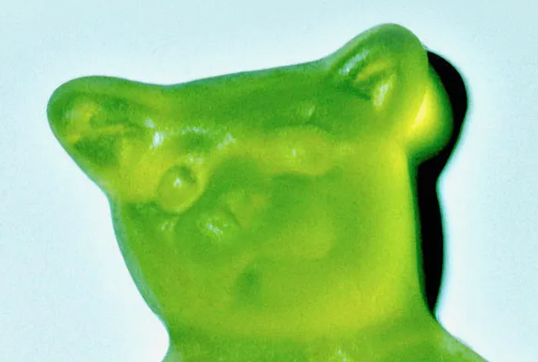
You know, I wouldn't be surprised if someone saw one of their guruma motif tsuba, where the straight sukashi lines were a little more distorted than usual, pointed out the similarity to a slice of lotus root... then the smiths started to play with the idea.
Kind of like this one (from Varshavsky's bibliography):
http://varshavskycollection.com/wp-content/uploads/2018/04/IMG_5965-372x400.jpg
I guess it's all "food for thought"
Dale's pun, not mine, so he gets credit for that one

-
 1
1
-
 1
1
-
 1
1
-
-
OK here’s another…
I’m sure most people who start looking into Momoyama period tsuba, will quickly realize how common the “wagon wheel” motif was.
It was employed in all sorts of variations, ranging from faithful realism, to abstractions where only a partial section of the wagon wheel is shown, to varying degrees of “expressionism” where the motif gets increasingly distorted or obscured.
The wheel motif was one that was refined and explored by the Yamakichibei smiths.
However, in sorting through images of the many variations of Yamakichibei “wheels”, it became clear that certain forms were quite consistent and could possibly be alternative motifs that the smiths adopted into use simply because they have an inherent “wheel-like” characteristic. In effect these artisans could have been “double dipping” with their choice of motifs.
MOTIF 3 – Lotus root (perhaps with some type of vessel/cookpot hitsu-ana)
According to Varshavsky’s bibliography, the one at bottom left was once part of the A.H.Church Collection where it was described as:
“Iron, mokko form. Irregular surface with 8 irregular piercings. Signed: Yamakichi.”
If you look at the four examples, the general outlines of the 8 sukashi are remarkably similar from one tsuba to the next, even though the individual sukashi openings appear to be “irregularly” shaped. So, this is clearly a predetermined pattern that is being repeated on multiple tsuba shapes and sizes (although the Yamakichibei do love their mokko-shaped tsuba!). None were done with any “randomness” on the part of the smith.
This deliberateness, along with the fact that the motif takes on a more “organic” looking, almost vegetable-like form, is what got me thinking that this pattern must be alluding to something other than just a distorted wheel motif.
Recently, I was looking up something about Japanese cooking traditions and accidentally came across a food item that jumped out immediately as being a solid representative for this tsuba motif.
Call me crazy for suggesting it, but I can’t help but notice how similar it is to slices of cooked lotus roots!
When sliced raw, the outlines of the holes are quite smooth (bottom image), but then they get much more irregular after they are cooked (top two images)
Knowing that the Yamakichibei used other food items in their tsuba motifs, like the edamame beans I posted earlier, and their already known “sticks of dumplings”, I started thinking that cooked lotus roots wouldn’t be “off the table” as a possibility.
I decided to look into it more, and it turns out that eating cooked lotus root is particular to Japan (and China and Korea …and perhaps some other countries as well).
I also looked up areas where lotus root is cultivated in Japan: https://japancrops.com/en/crops/lotus-root/
In 2020, Aichi prefecture was ranked #4 in Japan’s lotus root agricultural production.
Aichi prefecture was formerly included in an area that was known as the Owari province, which is where the Yamakichibei smiths were established.
So, it wouldn’t be unreasonable to assume that this area was engaged in lotus root cultivation at the time of the Yamakichibei, and this was a dish that the Owari samurai were familiar with.
I suspect it might be very difficult to find some sort of accounting record of the lotus root production in Owari during the Momoyama period, but it would be a fantastic bit of “confirmation”.
Back to the motif itself:
1- The number of sukashi openings
Interestingly, it turns out that most of the time, lotus roots grow with 9 holes arranged in a ring-like pattern around the center.
However, a Google image search revealed that can also form with anywhere from 8-10 holes (maybe even more or less?).
So, if this really is a lotus root motif, it makes me wonder why the Yamkichibei would consistently choose 8 sukashi openings when 9 was far more common…
I wonder if they deliberately chose this for reasons of general aesthetics, or perhaps to represent the Buddhist “eight paths to enlightenment”.
And just as a bit of musing, maybe they picked the rarer 8 because it would be akin to something like the Western idea of finding a “lucky four-leaf clover”. Maybe finding that occasional 8-hole root slice in your bowl held some sort of “good luck” aspect to it. Unfortunately, I have no way of finding out if this is true.
2- What are those unusual hitsu-ana supposed to be?
This one most clearly shows the core elements that are common to all of them:

As far as I know, these are only found in the Yamakichibei tsuba.
I’ve never seen anyone attribute a meaning to these bizarrely unique hitsu-ana with any confidence or certainty… it always seems to start with a smile and “oh, you mean the bear’s head?”
 , then it eventually ends with a shrug of the shoulders and a “who knows?”.
, then it eventually ends with a shrug of the shoulders and a “who knows?”.
Looking at the four tsuba above, the hitsu-ana shapes are once again, quite consistent in their basic design elements, therefore must be deliberate in their design.
While looking at the one of these tsuba turned on its side, some possibilities came to mind:
1- Maybe some sort of suhama motif? (a topic already discussed by others in this thread)
2- Maybe it’s some type of container with two handles?
a) a basket filled with a few uncut lotus roots?
b) a lidded cookpot? Like a traditional Japanese clay cookpot called a donabe that is used for stewing and brazing (like what you’d cook the lotus roots with)
I was almost certain it was a donabe, but the tsuba with the fancy hitsu-ana inserts has some pretty exaggerated features… particularly the two “protrusions” at the sides. So, this steers me back toward the idea of a basket with several uncut lotus roots jutting out


To sum up:
The cooked lotus root, along with some type of vessel/cookpot does seem to fit from a visual perspective, and could possibly have the following reasons for its use:
· A motif that references an agricultural product and meal type that has cultural significance to the Owari province.
· Perhaps a reference to the Buddhist 8 paths to enlightenment.
· Perhaps some element of luck or good fortune because 8 holes in a lotus root is less common (again, purely a hypothetical on my part).
· And as a bonus, it simultaneously alludes to the “wheel motif” and whatever significances that had to the samurai of the time.
-
 8
8
-
 2
2
-
-
MOTIF 2 – Edamame (soybean) pods, with Sun, moon and star, and Inome (boar’s eye) hitsu-ana
The many sukashi elements positioned between the two inome-shaped hitsu-ana, seem irregular at first, but they are actually repeated patterns.
They have either 2 or three round bulges, with narrower “protrusions” at either end, where one is end is more squared off, while the other end has a more pointed tip.
Edamame typically has 2 to 3 beans inside a bean pod:
https://specialtyproduce.com/produce/Edamame_Shelling_Beans_17810.php
Bottom left image: two sword hilt menuki shaped as one double- and one triple-bean edamame
Bottom right image: a bowl of cooked edamame from:
https://www.kobejones.com.au/everything-you-need-to-know-about-the-humble-edamame-bean/
Note: there’s a remarkable consistency in the sukashi designs of both these tsuba:
2 inome-shaped hitsu-ana
6 double bean pods (arranged in a ring)
1 triple bean pod (located at the bottom of the design)
3 circles (2 small and one large)
Here is another variant of the same theme, but the tsuba does not have the mokko shape o fthe previous two. Interestingly, the entire pattern has been inverted, such that the triple-bean pod and the largest circle are positioned near the top of the tsuba.
It was described in the fourth issue of the KTK as “Obscure sukashi motif. Oban form”.

So what are the three small circles?
I found this example and quote from Sergei Varshavsky’s site:
In a different tsuba design from Yamikichibei, published in the 1992 Lundgren collection, the “three circles” are presented as a single motif in a much larger scale, and the design is described as:
“Sword guard with design of sankô (Three Lights: the sun, the moon and the star) in openwork. Signed Yamakichibei.”

*note: all black and white images and blue quotes are from Sergei Varshavsky's site
-
 4
4
-
 3
3
-
-
MOTIF 1 – Japanese Edelweiss Flower

The motif that appears to be a flower with what appears to be: 2 oppositely positioned, oblong, pointed “leaves”, with 6 smaller “petals” with a similar yet shorter shape to the leaves, positioned around a circle in the center.
After searching for native Japanese flowers with similar characteristics, I narrowed it down to a single candidate. I believe that this motif represents Japanese edelweiss.
There are 11 species of this flower which grow in Japan, China and Korea.
Scientific article: The establishment history of alpine Leontopodium japonicum (Asteraceae) resembles that of warm-temperate plants on the Korean Peninsula (Lee et. Al, 2016)
The following information was obtained from:
www7a.biglobe.ne.jp/~flower_world/Asteraceae/Leontopodium%20japonicum.htm
In Japan, there are two main “types” (however according to Lee et al, there appears to be 7 distinct genetic variants within Japan).
One is common from the lowlands up to the sub-alpine areas all over Japan, and the other grows specifically in the higher mountainous regions of Japan.
It’s interesting to note that the author wrote that from visual cues alone, he can’t tell the difference between the lowland and alpine types.
Scientific name: Leontopodium japonicum
Japanese common name:1- usu-yuki-sou [pale snow weed]
2- mine usu-yuki-sou [mountain pale snow weed]
The flowers bloom from July to October
Potential significance of the motif:
This particular flower motif is seen on many Yamakichibei tsuba, and from a variety of their smiths.
For those who may not know, the three kanji of Yamakichibei (山吉兵) translate to something like “lucky mountain soldier”.
From Google translate:
山 - mountain
吉 - luck (or fortune)
兵 – soldier (or warrior)
So, a flower motif that specifically calls to mind the idea of “mountains”, might have made one of these tsuba recognizable as one of the “Yama” tsuba. So, it could have partially served as a sort of “calling card” for the Yamakichibei.
Given the established lore that the Yamakichibei smiths were retained by Oda Nobunaga, having a recognizable “Yama” motif may have also helped identity the wearer as one of Oda Nobunaga’s warriors.
Many of the Japanese tsuba motifs have associated “inferred meanings” that would have been most culturally relevant and significant at the time of their production and use.
I looked for culturally associated meanings for Japanese edelweiss.
Interestingly, in today’s Japan, this flower is viewed as representing “power and/or courage”.
This sentiment would have surely been appreciated by the samurai who was rewarded with a tsuba carrying this motif, especially during the peak of the warring era of Japan.
However, before solidifying this connection, it would be important to determine whether the edelweiss flower had this same association during the Momoyama period…a daunting prospect that may be very difficult to confirm.
-
 3
3
-
 4
4
-
-
I see you all have been exploring some of the abstract motifs of the Yamakichibei tsuba… lots of fun

I’ve been collecting and sorting images of Yamakichibei tsuba for quite some time now.
Recently, a bunch of things “clicked” and I feel like I made some progress on a few of their motifs, so I thought I’d share 😊
I’m curious to see what you all think.
Sergei Varshavsky’s “Yamakichibei Tsuba. A Limited Bibliography.” has been an indispensable source for many of the images and descriptions quoted directly from the authors of the books they were published in. All the black and white images I will use come directly from Sergei’s site. Here’s the link if you don’t have it:
https://varshavskycollection.com/yamakichibei-tsuba/
It was interesting how often words like: obscure; unknown; and “may be…”, appear in the quotes. Some authors have even been deliberately evasive about the motifs by using descriptions like “with small sukashi”.
-
 2
2
-
 1
1
-
-
Brian,
I completely agree with you that it makes no sense to make an individual tatara to produce a singular cast iron product, unless it was a very special item with a very large price tag for the effort.
My point is that cast iron foundries were on a much larger scale than that during the Edo period, and they were clearly producing items in quantity.
Here's an image from the archives of the Okamoto corporation that has been making cast iron products in Japan for 460 years. It's Edo period, but the exact date of the image is unknown:
More quotes from Isogawa, specifically referring to the evolution of foundries in time period preceding the Edo period:
"in the Eastern Japan, pot C was the main form of boiling throughout the Middle Ages, and in the Western Japan, Buddhist utensils made of bronze were sometimes made of cast iron, such as iron Buddhas and iron bowls."
I'd like to point out that bowls, Buddhas and "Buddhist utensils" are not kettles... and I would suggest that it alludes to at least some smaller objects for a more utilitarian household usage, or with some decorative motifs to serve as "Buddhist utensils" (what those are specifically is not clear unfortunately). And again, this goes back to pre-Edo times. So, it seems there's a much longer history to the production of smaller or more common objects.
continuing from Isogawa:
"These cast iron castings were produced by workers who were called "foundrymen" in the Middle Ages. From the results of the survey of the casting ruins, it can be assumed that many of them adopted the production form of copper and iron side by side.
In ancient times, production workshops parasitized ironworks, but in the Middle Ages they were often located around casting sand production areas. In the late Middle Ages, some were located on the periphery of cities."
So, casting foundries were first set up next to the ironworks that were producing steel and cast iron in "ancient times", but were moved away from the sources of "sand iron" in order to be closer to the necessary "casting sand" for making molds. Then lastly, moved to the outskirts of cities.
I would assume the only logical explanation for the move would be to get closer to the growing consumer demand from the people living in cities.
So it seems obvious that the only way casting foundries could be moved away from the source of the cast iron itself (sand iron), was if they were being supplied with cast iron ingots from the steel production sites. There's no way they were moving unprocessed sand iron to the foundry locations. The cast iron would have to have been sent in an already prepared, ingot form for it to make economic sense.
-
 1
1
-
-
Darrel,
Point #1: I am fully aware that the majority of sukashi tsuba were cut with chisels.
I'm only pointing out that the technological advance of gaining the tools to saw a sukashi cut, was omitted in the posted statement.
My point in bringing it up, was that in both cases (sukahsi cuts & casting iron), certain significant technological advances were being omitted.
Hence the idea of being "stuck" with a certain mindset: like the idea that cast iron products would have been made in small field tatara throughout the Edo period. This would have severely limited their potential for producing items in quantity.
Point 2: I never suggested it would be easy to work regular cast iron. I simply asked if it was possible to do nunome crosscutting with a file on regular cast iron. Ford kindly responded that it would not work.
I did explore the idea of malleable cast iron at various points in this thread, but the use of that type of cast iron during the Edo period is still not confirmed.
Nailing down that date of usage, could be important in sorting certain "types"/"styles" of cast iron tsuba into relative production dates.
eg. "Type "X" could only have been produced after the use of malleable cast iron, therefore must have been produced after date "Y".
Also, tatara can produce both sword steel and cast iron. This was all discussed much earlier in this thread. It was pretty clear from the Akita university paper that they produced grey cast iron right off the bat in their tatara.
Sorry, I don't see where you're going with the soft vs hard steel comment.
As for the need for breaking the tatara... that's definitely necessary for the small field tatara.
As far as I can tell, that does not appear to be necessary for the larger tatara furnaces with fixed structures that were operated by many workers.
These fixed structure furnaces would have facilitated in scaling up the production of many cast items from a single melt.
-
 1
1
-
 1
1
-
-
Brian, my point about the tatara, was that even the simplest version of these was able to reach the required temperature to melt cast iron.
I wasn't at all trying to infer that someone would go to the trouble of building, then tearing down a field tatara to produce some cast iron products. That wouldn't make any sense at all.
I was simply pointing out that if a small tatara can reach the 1200 C, then a larger, dedicated foundry furnace for casting (as described by Shinya Isogawa) would easily reach the necessary temperature for casting. So, getting up to temperature was not even remotely an issue.
The longer Shinya Isogawa article points to a necessarily cooperative nature in the running of a larger furnace to produce many small items or single large item, and in this section of text, he's stating that this type of production dates as far back as the "ancient", pre-Edo times:
"Since a large furnace with a treadle sheath can melt a large amount of metal, it is certain that this is premised on the mass production of small castings or the production of large castings. In addition, in both the mass production of small products and the production of large castings, cooperation is necessary in the production and casting of molds."
This trend continued and became more structured and organized in the "early modern period" (early Edo period):
"In many cases, it is said that management and technology and labor were separated from each other in the early modern period, and the character of the handicraft elder became clearer. However, some local foundries did not take this path and retained the medieval form of production and management."
So it seems clear that the Japanese were already casting small cast iron items "in mass quantity" since before the Edo period.
Now that obviously doesn't necessitate the inclusion of tsuba at such an early date.
It makes more sense (to me) that cast iron tsuba production would have kicked in when shiiremono were being consumed by the masses.
But the important point here is, that according to the Japanese archeology summarized by Isogawa, the production of many small cast iron products in mass quantity was just a matter of fact.
-
 2
2
-
 1
1
-
-
On the issue of “opinion-based” thinking.
As for my knowledge base, I will freely acknowledge that before getting into this thread, I knew virtually nothing about casting iron. Over the months of reading and researching the topic from both Western and Japanese sources, the more I learn, the more I realize how little Ford knows about this specific topic in relation to Edo period Japan.
One major issue, is that Ford appears to be stuck on the idea that only the small-sized tatara was available to the Japanese throughout the Edo period. These are often referred to as “field tatara” in the literature. His understanding of what these basic tatara were capable of is overly simplistic and deeply flawed, as pointed out in my previous post.
It is also clear that Ford seems unaware of the degree of “industrialization” that the Japanese employed in their steel and cast iron production capabilities as they switched to increasingly advanced, larger scale tatara with fixed buildings and whole communities of workers dedicated to running these facilities. There were many posts on this topic earlier in this thread.
I really don’t want to harp on it, but a similar bias was demonstrated recently in this thread, where he asserted that sukashi tsuba were exclusively chiseled and never sawn. This was also demonstrated to be a false statement in the resulting spin-off thread: One more thing- the use of saws in tsuba making? - Tosogu - Nihonto Message Board (militaria.co.za). It does seem to be presenting as a “pattern” of behavior. However, I certainly could be wrong about linking these events… it’s just an observation. My apologies if I’m off base on this one, but this is how it comes across to me.
-
 1
1
-
-
OK, I finally had a bit of time to dig in to Ford’s list of comments and opinions. My apologies for the length of this post, but as I mentioned previously, it takes time and effort to go through a series of articles and put it all together.
Let’s address these points from Ford:
“the way Glen presented the matter is could be inferred that casting iron is simple and only requires a 'relatively low temperature'. This is, as I described, far from the truth.”
“he's making statements as though fact when he is unclear regarding the technical issues involved.”
“I'd also add that melting cast iron is impossible "at a relatively low temperature". “
Look up any information on the temperature range of Tatara, and 1200 Celsius is well within that range… no great leap at all. Just about any tatara should be able to melt cast iron… plain and simple.
Here’s an excerpt from the abstract of a published Japanese article about the production of sword steel using small tatara:
“The steelmaking operations using a small "Tatara" furnace have been performed to investigate the effects of furnace size on the characteristics of "Kera" (steel bloom).”
“It is important for Tatara steelmaking operation to arrange the furnace size with which iron sand is reduced and carburized at temperatures around 1350 degrees C without being blown out.”
So, if 1350 C is the ideal temperature for making sword steel in a tatara, then reaching 1200 C to melt some cast iron would be a comparatively simple task.
Here is another published Japanese research paper, where even an improperly functioning tatara reached the 1200 C temperature.
たたら製鉄法に基づく向浜砂鉄の製錬と鋳造--創造工房実習より得られた二三の知見 | CiNii Research
In the publication from the Faculty of Engineering Sciences of Akita Univeristy, by Yoshinari Komatsu, Shoji Goto and Setsuo Aso, they were able to smelt their own cast iron from Japanese sandiron, using a small tatara. Using metallurgical analysis, they verified the product to be grey cast iron with a carbon content of 4.12%.
From the paper’s abstract:
“A small-sized "Tatara-buki" furnace was made for laboratory working. Iron sand was mined from Mukaihama beach in the city of Akita and applied to iron making based on the "Tatara-buki" process.”
They managed to reach temperatures of 1470 Kelvin (1197 degrees Celsius) in their tatara, DESPITE the fact that one of their air sources was misaligned, so they didn’t even have the proper air flow in their tatara. They reported that the improper airflow also led to slag buildup which exacerbated the issue, so their tatara’s temperature declined after reaching the initial ~1200 Celsius peak, but it was still enough for them to produce cast iron from their collected iron sand.
Here's the graph of their measured temperature values, using two different temperature sensors (the temperatures are expressed in units of “Kelvin”)
In their evaluation as to whether or not this type of activity would be valuable as an educational tool for use with materials science students at the university, the authors stated:
“it is easy to make iron and cast using materials that are readily available”
So, Ford’s statements of “I'd also add that melting cast iron is impossible "at a relatively low temperature". Typically 1200 degrees C is needed to do the job, this is really at about the limits of a bellows fed charcoal fire” and “The point being that casting iron is not a quick nor simple process. ", are clearly NOT SUPPORTED by the Japanese who specialize in materials science and have actively researched traditional small sized tatara. These opinion-based assertions by Ford, again completely unsupported by any evidence or citations from Ford, are COMPLETELY FALSE.
More later with information about casting methods from Japanese sources (including the Yoshinari Komatsu paper cited above, and the longer Shinya Isogawa paper cited in recent posts).
I see Dan already got started on it...
-
 2
2
-
 1
1
-
-
In not addressing some earlier points:
Some us do have a day job, so I personally don't have an infinite amount of time to address each point in one go. I'll do my best to get there in due time.
No need to be so judgmental as to suppose that myself or anyone else on the "Edo cast-iron side" is attempting to skirt an issue that is being presented... I think everyone trying to explore that possibility is doing their best to dig up information to address each point.
These things take time to research from a variety of sources, so they aren't as easy to put into writing as quickly as an objection.
So let's address one point now:
5 hours ago, Ford Hallam said:They even pointed out that a certain point in the Edo period, household ceramic bowls had been largely replaced by cast iron bowls.”

We now know that this statement does not occur in the quoted texts, in any version or interpretation,
I don't know how else to interpret this phrasing from Shinya Isogawa, which was backed up by the statement of observation by a Jesuit missionary:
9 hours ago, GRC said:Regarding the prevalence of cast iron castings in different regions, the relationship with earthen cookers must be discussed. Although the disappearance of earthen cookers became prominent in the middle of the 16th century in Western Japan. This is nothing more than an indication of the spread of cast iron castings and pots.
Isogawa's statement, specifically referred to the mid-16th Century.
The missionary's writings (by Luis Frois), were done during the Momoyama period, specifically from 1578-1593.
So technically, that is still pre-Edo.
The title of this section of writing is:
9 hours ago, GRC said:From the Middle Ages to the Early Modern Period
In the author's writings, he refers to the Edo period as the "modern period".
You could clearly make the case that ceramic bowls were largely replaced by cast-iron bowls just prior to the Edo period's beginning. So we can chalk that one up to me conflating the section title's reference to "modern times" as "Edo period and I blended the two together.
However, do you really think that the Japanese suddenly switched back to the use ceramics and stopped producing/consuming cast-iron goods in mass quantities at the beginning of the Edo period?
Additionally, this does not negate the phrasing by the author that is written as a statement of fact. From this, it is a perfectly reasonable conclusion to state that the Japanese were clearly producing and consuming cast-iron goods for household use since the mid-1600s. Bowls are a common everyday household item, are they not?
Feel free to share an alternate interpretation of the author's statements.
More on some of Ford's other interpretations later...
-
 1
1
-
 1
1
-


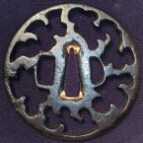
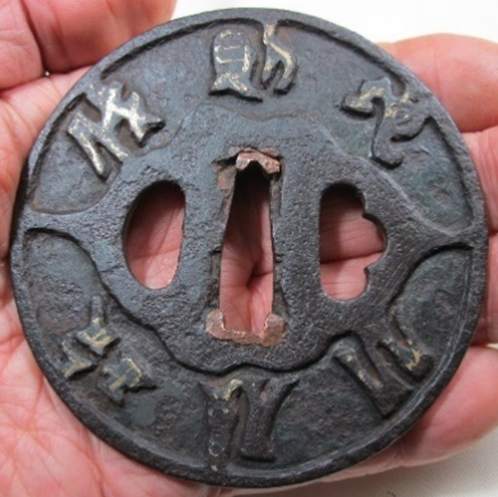





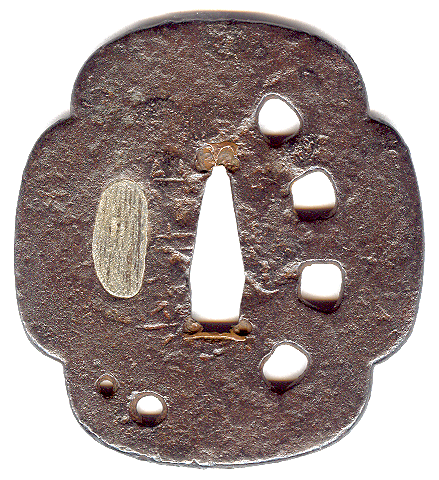

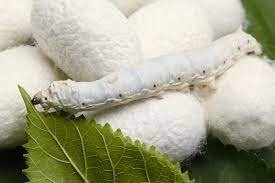
















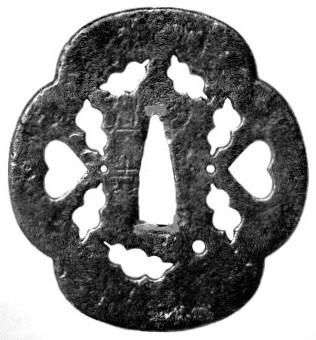
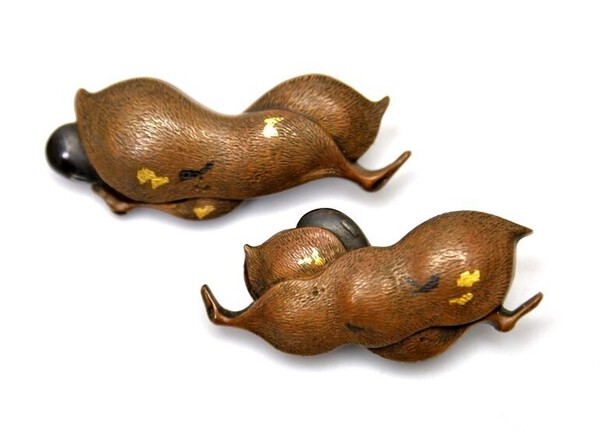

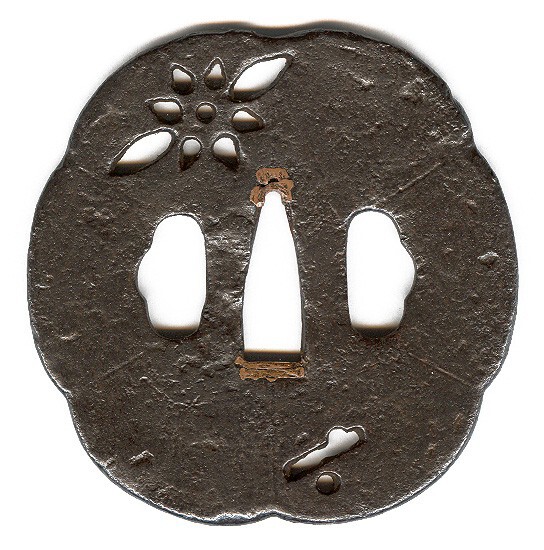


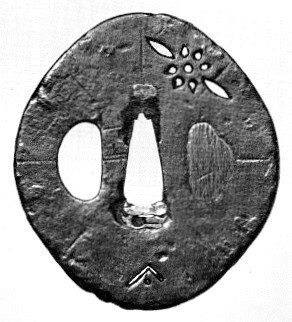

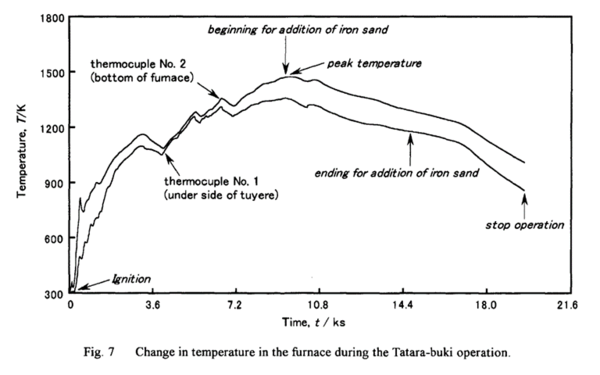
strange tsuba identification
in Tosogu
Posted
I wonder if this museum tsuba was, at least in part, inspired by this Nobuiye tsuba (in Torigoye book)